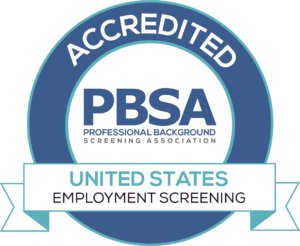Today’s workforce is already much different than just a decade ago.
As technology further integrates into every industry’s day-to-day, workers benefit from conveniences while facing new challenges. Because most processes are far less manual, procedures have become more streamlined overall. However, while we move away from tiresome data entry and outdated communication practices, the average employee is trusted with more oversight than in times past.
Account managers are likely managing more clients than before; fewer workers likely manage warehouse inventories; what once existed as two or three positions have been folded into one in many working environments.
While technology has made processes easier, this doesn’t mean the average worker suddenly has more capacity. Instead, it means employers must be more intentional about preventing employee burnout.
Here are some essential tips that can help as you work to increase performance and productivity within your organization.
The average employee is trusted with more oversight than in times past.
1. Embrace Operational Agility
Just because an employee is skilled at a position does not mean they wouldn’t be equally or even more suited for another within the same or related department. Ensuring each employee is in the right seat on the bus can significantly benefit overall productivity.
While it’s not prudent to switch personnel around in many cases, it can be the right move under certain circumstances.
2. Establish Trust With Employees
Trust is the foundation of a healthy relationship, personal or professional. If employees don’t trust their managers or company executives, they won’t give them their best. Some of the easiest ways to discourage trust are to micro-manage, fail to listen, and for one to fail to act in accordance with their words.
Trust is built when it’s merited. In a job market full of unique opportunities, employers must be more intentional about earning the trust of those they supervise.
3. Set Aside Time for Airing of Grievances
People like to be heard. Creating a forum for employees to express their pain points, knowing they will be listened to, can help boost morale and long-term performance. Allowing employees to speak candidly will make them feel empowered and heard. This will also give employers helpful feedback that can fuel organizational improvement.
4. When Necessary, Discipline Tactfully
Even when there is a clear cause for formal disciplinary action, the individual or group executing it should go about it with tact. Such tact ignores strong emotion, bias, and trepidation while exhibiting thought, pause, and care. How employees are disciplined within an organization can greatly impact overall motivation and performance.
5. Define Clear Goals
Of course, any key performance area should be accompanied by a metric. If an organization doesn’t have clear operational goals, there is not much of a standard to be upheld. Where no standard exists, there will inevitably be confusion or a lack of seriousness toward the task at hand. Employers must create concrete goals, communicating them clearly and frequently to their workforce.
6. Establish Accountability Standards Up-Front
In many ways, accountability is a reflection of how much one care’s about a goal. If an employer sets an empty goal, the efforts of holding employees to it will likely be minimal. For employees to care about your organization’s goals, you have to show them that you care about your goals first. This is done when you make people accountable to the goal.
Any accountability standard needs to be clearly expressed up-front.
Every employee should know what is expected of them and how they are to report on their performance.
7. Offer Incentives
Almost everyone appreciates a formal acknowledgment of hard work. Incentives not only motivate employees but validate their extra efforts. However, incentives based on mere participation lose value. Set a bar for your employees, and reward those who reach it. In time, performance and productivity will benefit.
8. Promote a Healthy Work Environment
Employees aren’t as motivated to maximize their potential when they don’t feel safe, whether emotionally or physically. Make sure your workplace is as safe as possible. Consider screening your employees and implementing a drug-testing program. Work to promote a culture of friendliness and trust. These things will contribute significantly to the overall success of your organization.
Conclusion
For most, the word “work” is different now than it was in 2010. Employers must evaluate how they encourage their workers to give them their best, implementing strategies and practices to increase morale and productivity. If done correctly, employers can achieve high, sustained performance from their workforce.
For more insights, visit us online.








